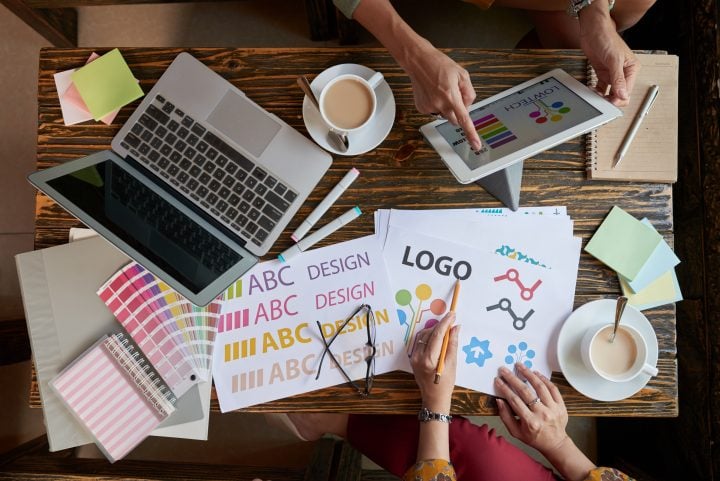The visual identity is the brand’s external appearance and needs to make a lasting impression with the public to ensure customer attraction and, ultimately, retention. Visual elements like graphics, imagery, typography, colors, symbols, and icons will all make up your brand’s visual identity, of which your logo is a big part. This article will discuss the importance of a logo and what it says about your brand.
Understanding Your Logo
Your logo will be the trailblazer for your brand, otherwise referred to as a representative mark for your business. The word ‘logo’ can refer to a logotype or logomark. Understanding the difference between the two will give you more clarity about how you want your logo to communicate with the world. A logotype can include a business name, monogram, signature, or any text. A logomark uses icons, shapes, or symbols in the logo. It is possible to use both types, referred to as a combination mark, which can often enhance a logo’s effectiveness.
When designing your logo, each visual element needs to be intentionally placed according to your business and the brand’s overall vision and mission.
This requires knowing a bit more about visual elements and their meanings, so seeking out logo creation services has proven to be a pretty successful strategy. Additionally, when it comes to using a logo, image quality plays an important role. Let’s take a look at these concepts in more detail below and how you can apply it to either your logotype, logomark, or combination mark.
Colors
Colors create different moods and evoke emotions. Using color strategically in a logo will inform how people respond to it. Every color holds a different symbolism; some of the colors are included below but are not limited to the following meanings and associations.
Red: passion, energy, danger, and power.
Orange: youthfulness, enthusiasm, cheerfulness, and vibrancy.
Yellow: positivity, optimism, confidence, and happiness.
Purple: spirituality, luxury, imagination, and royalty.
Pink: love, femininity, and romance.
Blue: strength, intelligence, and calmness.
Brown: associated with the earth, stability, warmth, dependability, and neutrality.
Black: authority, power, sophistication, and boldness.
White: purity, simplicity, minimalism, and modern.
Gray: professional, formal, conservative, and more serious. It can also be used as an alternative to white or black.
Typography
Typography refers to the appearance and style of textual elements and how these are arranged in a logo. Fonts are often used to refer to the style of texts. However, the term typeface is correctly used to indicate the text’s style, whereas the term ‘font’ refers to the variations of styles within a typeface. This includes width and size. Various typefaces will affect your logo’s appearance and message. Some of the well-known typefaces are, for example, script, serif, and sans-serif.
Serif: a popular serif typeface is Times New Roman; these have small lines or strokes that decorate the end of the letter’s stem (also referred to as small ‘tails’ or flourishes).
Sans-Serif: sans is a Latin word that means ‘without.’ As the name suggests, these typefaces have no ‘tails’ at the end of the letter’s stems. This typeface will give letters a more clean and streamlined appearance.
Shapes and Symbols for Logos
You will need to brainstorm ideas if you want to use a symbol or shape as your logo as it will need to convey the message of your brand in a clear and easy-to-understand manner. An advantage of using a symbol or shape is its universality of communication – it won’t be in a specific language.
The Importance of High Resolution
Your logo format is important as it needs to be scalable for business cards, merchandise, social media, or any other promotional materials. A logo with high resolution in any size will indicate a professional appearance. Try TRUiC’s free logo maker here to design and download a good quality logo scalable for any advertising materials.
Wherever you choose to showcase your brand, be it your website or any other digital signage, follow these guiding principles to ensure that you are connected to what your logo says about your brand. It is essential, however, to know the difference between your brand and your logo. Your logo is a key part of your brand’s visual identity, but your brand goes beyond visuals; it includes your company’s values, mission, and overall identity in the marketplace. By understanding this distinction, you can effectively leverage both your logo and brand identity to connect with your audience and drive your business forward.
